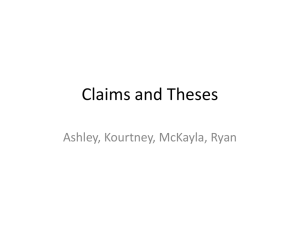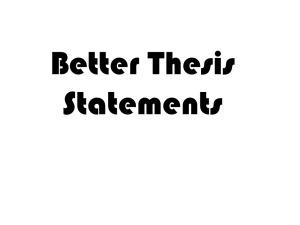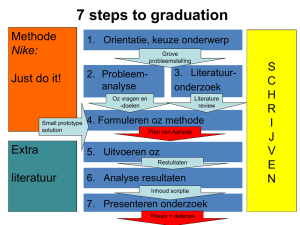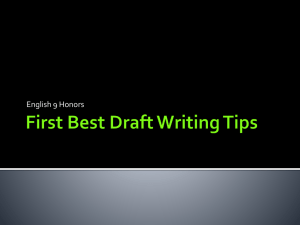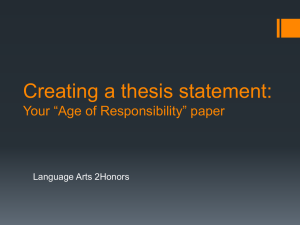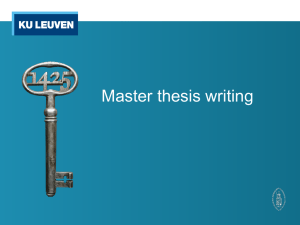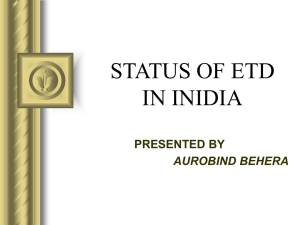of thesis statements
advertisement
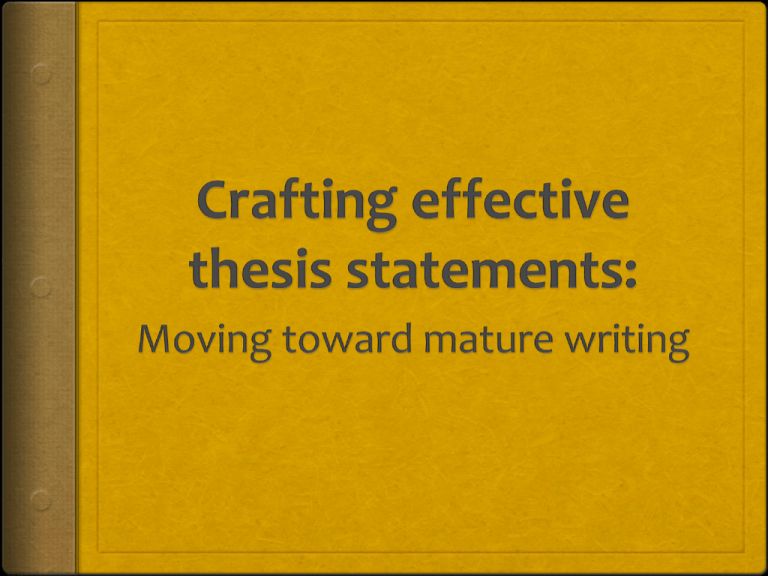
Thesis statement defined A thesis statement is the idea the writer intends to prove in the essay. It is the main point and the controlling idea of a piece of writing EVERYTHING in the writing should relate DIRECTLY to the thesis statement. Basic “rules” of thesis statements They usually are placed toward the end of the introduction paragraph. A writer must have a thesis statement prior to writing the paper, or the paper will lack coherence and focus. They are, in fact, statements; they are NOT questions. Brief essays (shorter than ten pages) usually have a ONE-sentence thesis statement. For the purposes of this class A thesis statement will never be a mere fact. Boring/trite/cliché/predictable/dull theses will be rejected. Parts of a thesis statement Subject * Your opinion about that subject * Concrete evidence for that opinion * *MORE TO COME ON THESE TOPICS Subject Usually an abstract concept, such as characterization, tone, theme, mood, etc. Because it is abstract, it will require a certain depth of thought to fully comprehend. If you are responding to a prompt from a teacher, the subject will already be noted. If it is your responsibility to devise your own prompt (as it is when a teacher asks you to write about something very broad—like, for instance, movies), you must focus the thesis, yourself. Your opinion This portion of the thesis statement is the “value judgment.” It’s a deeper, more profound version of “good” or “bad.” (Note: don’t ever use those words….) The opinion must require some evidence. Facts are not opinions. Concrete evidence This is textual support for your opinion. Sometimes the area will be specified in the prompt. Example: Determine how archetypal imagery demonstrates the theme of the poem. This prompt notes two areas of required evidence: examples of archetypal imagery AND proof of the poem’s theme Examination of theses Here is a sample prompt for which you might write a thesis statement: Read the passage carefully. In a wellwritten essay, explain how the author uses imagery, figurative language, and detail to characterize Scrooge. (continued) Examination of theses (continued) What are the questions of this prompt? 1. What kind of character is Scrooge? (the abstract) 2. What literary elements reveal that characterization? (the concrete) 3. What is your opinion about Scrooge’s character? (continued) Examination of theses (continued) Here is a thesis statement that is typical of many beginning writers: In A Christmas Carol by Charles Dickens, the author uses many different types of figurative language to characterize Scrooge. Examination of theses (continued) Here is a thesis statement that answers the questions of the prompt: In Charles Dickens’ A Christmas Carol, the protagonist, Scrooge, is portrayed as the archetypal greedy, cold-hearted character through Dickens’ use of figurative language, such as similes and metaphors. Side note: authors are referred to by LAST name once both names have been established. Evaluation of theses Read the following sample thesis statements, and then identify from the thesis statement the subject and the writer’s opinion. Write one sentence that specifically explains what makes each an effective thesis statement. Evaluation of theses (continued) Read the following sample thesis statements, and then identify from the thesis statement the subject and the writer’s opinion. Write one sentence that specifically explains what makes each an effective thesis statement. Teacher prompt: Read the following poem carefully. Then, in a well-organized essay, analyze how the speaker uses literary techniques to reveal his attitude toward the subject of the poem. In Sonnet 18, Shakespeare’s use of personification and critical comparisons clearly reveal his disdainful attitude toward death.
